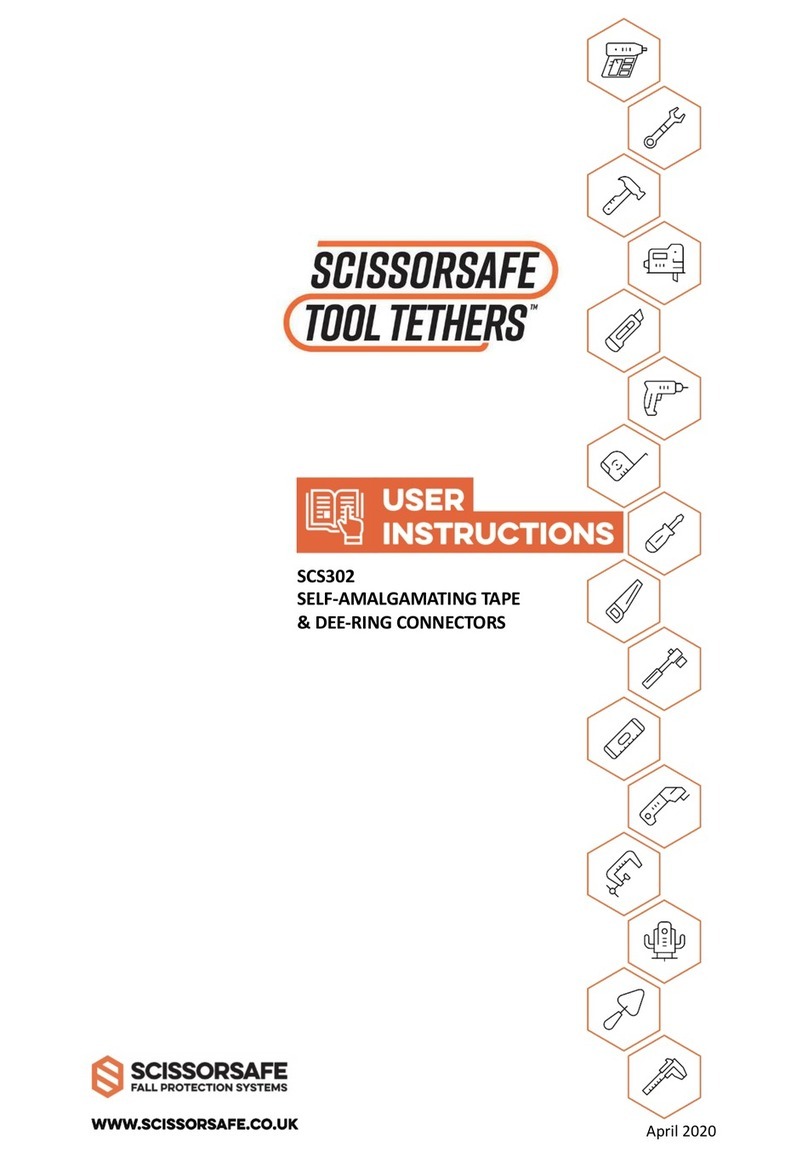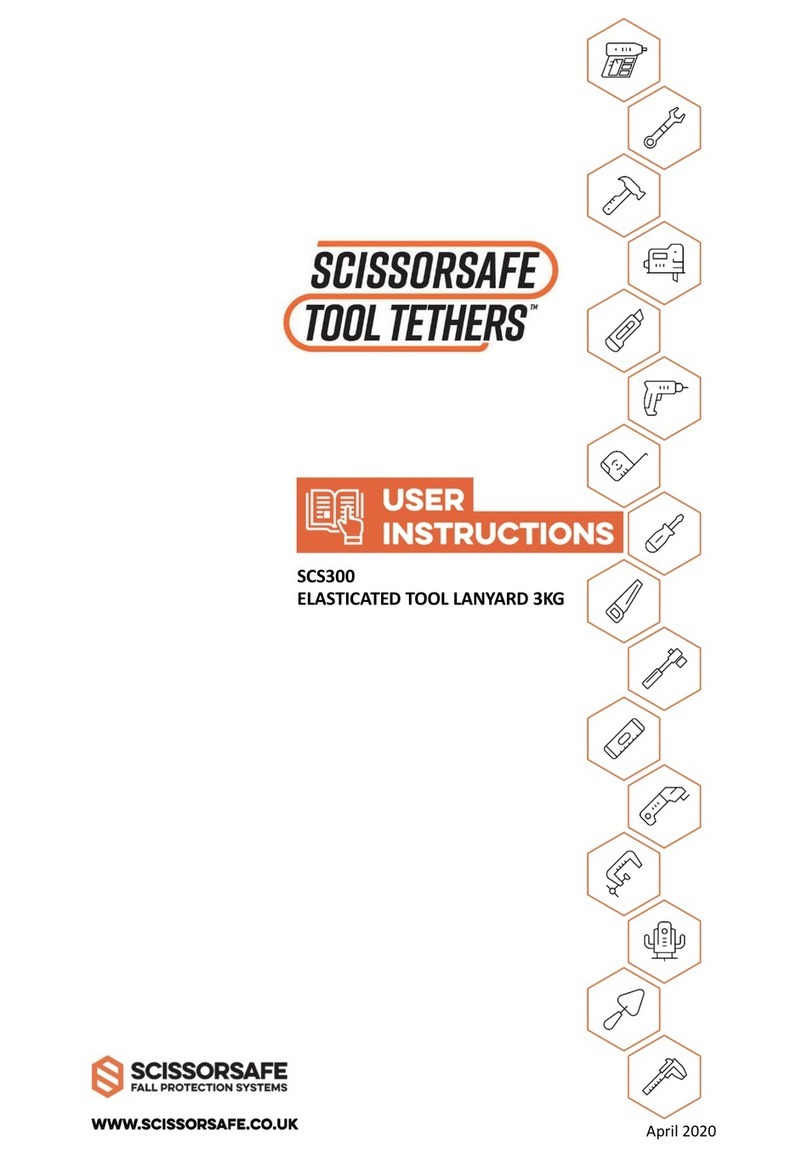The Work at Height Regulations places duties
upon employers and other duty holders
concerned with managing or carrying out work
at height.
Employers should establish a regime for the
inspection of equipment. It is essential that a
competent person is given the authority to
make objective decisions and take appropriate
action, even if this means rejecting a
component-at the cost of delaying a work task.
The inspection regime should include
•The equipment to be inspected
•User training
•Safe keeping, updating and access of User
record cards
•Frequency and type of inspection relevant
to each component
•Action to be taken if a defective component
is found.
There are also requirements in BS EN 865:2002 and BS
8437 which contain both general and specific
information on periodic inspection of fall protection
equipment.
Scissorsafe system and kit components carry
obsolescence dates and any component that has
reached this date and which has not been rejected for
other reasons, should be withdrawn from service and
not used again.
Good record keeping is essential to establish the age and
conditions of use for products.
Scissorsafe components carry unique serial numbers
that allow the history of the component to be recorded.
If the serial number is lost or becomes illegible, or if
Record cards are lost, please send a request to
Scissorsafe Ltd. and a replacement will be made
available to you.
These can be requested by email at
info@scissorsafe.co.uk.
This component is intended for use as personal
safety device serving to protect the user in
conjunction with a Safety Harness compliant to
EN 361.
Please refer to the Routine Inspection Checklist
provided with this component before using it to
ensure that it is in a serviceable condition and
is operating correctly.
Users of this Anchorage Device must be trained
in its use and pre-inspection requirements.
Ensure that the Anchor Device is not used outside its
limitations, or for any purpose other than that which it is
intended and that the user has been trained to do.
This component should not be used by anyone that has a
medical condition which could affect their safety when
using it.
Do not make any alterations, additions or repairs to the
Anchorage Device and withdraw it from use immediately
should any doubt arise about its condition.
Ensure the compatibility of other components intended
for use with this Anchorage Device in a Work Restraint
System and always refer to their specific instructions prior
to using them.
Ensure that a rescue plan is in operation, taking into
account all possible rescue scenarios during the work
Important points to consider before using this component
SCS003
SCISSORSAFE ANCHORAGE TOOL






























